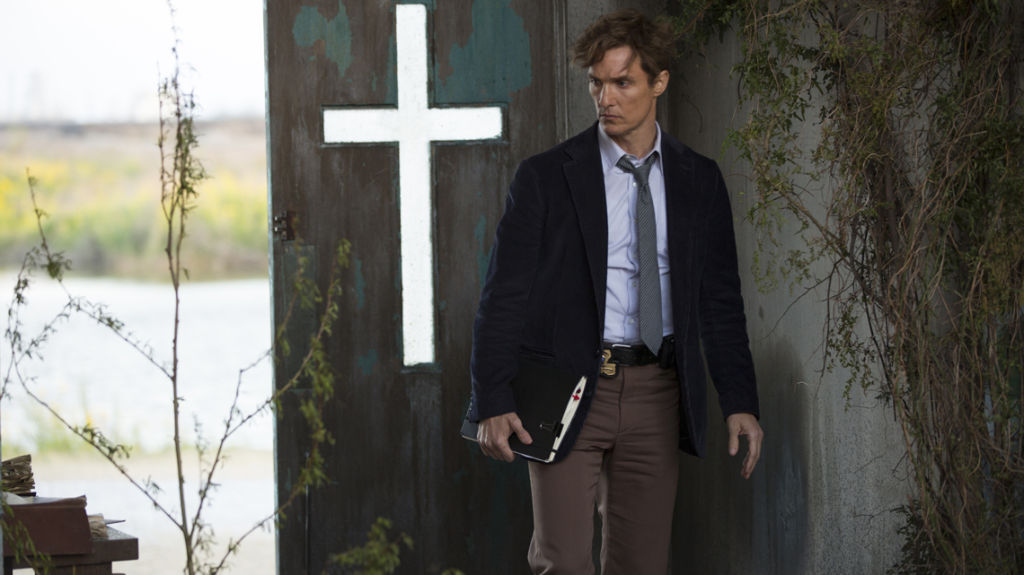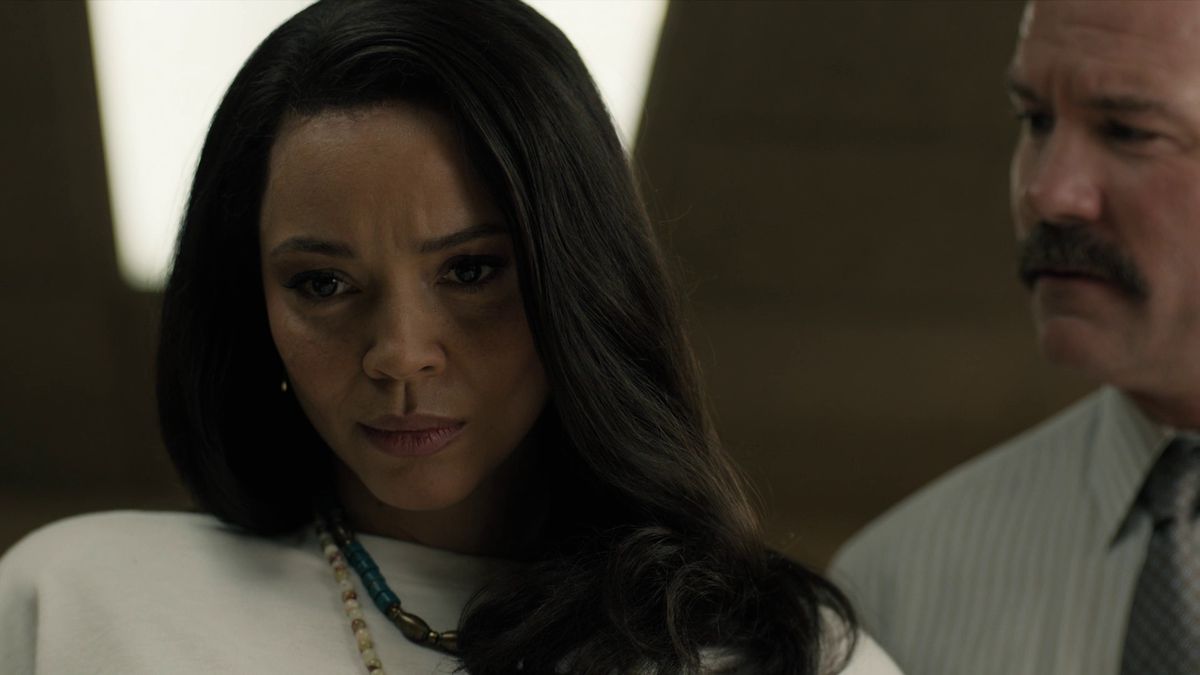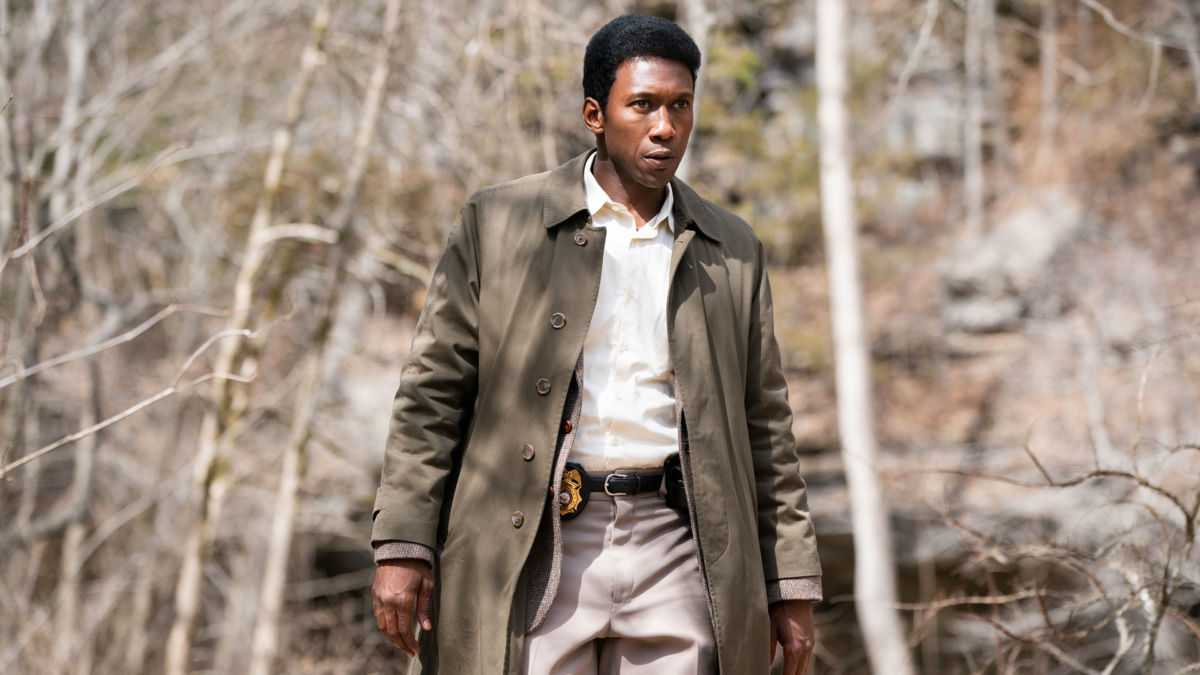True Detective first hit the screens in January 2014, receiving immense praise from viewers and critics alike. What separates True Detective (or at least, the first season) from the onslaught of other detective shows was director Cary Joji Fukunaga’s pure craftsmanship, in addition to Matthew McConaughey and Woody Harrelson’s impeccable performances. So when the third instalment aired in January 2019, the bar was set high for HBO. But did the True Detective sequel live up to the originals? Let’s take a look.
Plot
Told non-chronologically, the first season of True Detective flicks between a past murder investigation and current day interviews with the officers, seventeen years later. With a gritty storyline that is expertly paced over different time frames, every moment of True Detective is riddled with suspense. The success of True Detective can be traced back to its creator, Nic Pizzolatto, who perfects every aspect of the crime drama narrative.
Season two of True Detective, starring Vince Vaughn and Colin Farrell, was a major flop for HBO. Perhaps a lack of chemistry, tension or overall confidence was the cause of its poor reception (though it’s not without its memorable moments). This didn’t prevent them taking another crack at True Detective’s initial success. The investigation duo this year compromises of Mahershala Ali (recent Best Picture Oscar winner for Green Book, dir. Peter Farrelly) and Stephen Dorff.
The latest addition to the True Detective anthology returns to its roots, thanks to Pizzolatto and co-director Jeremy Saulnier. Pizzolatto’s step-up to the director’s chair is perhaps what caused the former glory of True Detective to (mostly) dazzle once more. Season three is finely tuned in both atmosphere and performance, again taking the format of a past investigation versus present day. But this time, Pizzolatto takes a more one-sided approach to the cop-bromance than the originals did. Detective Wayne Hayes (Ali) is the primary focus of the story, with his troubled marriage and elderly dementia adding more pressure to his already intense job.
The third season of True Detective is more layered than the first, with multiple storylines leading in different directions. Whereas Fukunaga focused acutely on the investigation at hand- along with the partner’s relationship- Pizzolatto follows three separate timelines and various different characters. The plot diversity of season three is both a blessing and a curse. The stakes are heightened, with tension rising on all sides, but our investment as a viewer is spread a little thin over so many storylines. For example, Haye’s partner Roland West is barely explored, despite seeming like an interesting character – humorous, yet clearly troubled.
True Detective’s initial investigation in season one was centered on the murder of a 28-year old prostitute who is discovered wearing antlers and surrounded by latticework. The pagan connotations of the homicide add an eerie quality to the story, with a demonic, ritualistic motif recurring throughout each episode. Although murder is an already unsettling notion, there are so many crime dramas on air that it can sometimes become tedious. By including these strange, mystical props into the investigation, Fukunaga was able to enhance the story’s sinister effects, forcing both characters and viewers to question reality.
Season three of True Detective treads tentatively on these satanic themes, with the straw doll found at the crime scene echoing the mise-en-scene of season one. However, Pizzolato edges away from folklore and sticks to a more conventional plot. Rather than investigating the murder of a prostitute, season three targets children. In doing this, Pizzolato plays to the audience’s heart strings, with child victims having a deeper impact than an adult with questionable morals. There is potential here for heavier drama, now plotline has taken a darker turn. Yet, Pizzolato fails to benefit much from upping the stakes, as the circumstances surrounding the missing children render less grave than initially expected. As well as being too distracted with the personal life of Hayes to hone in on the drama of the crime.
Characters
Sparking with chemistry, the actors bounced off each other like magnets in season one. And when alone, their intense performances held up just as strongly. An in-depth exploration of the human psyche was carried off with minimal pretension, never leaning into predictable dramatic tropes. McConaughey played Rustin Cohle, a cynical yet intelligent workaholic who viewed people as “sentient meat.” His partner, Martin Hart, was just about the only person willing to put up with him. While Cohle detailed notes on the crime obsessively, Hart tried to lighten the atmosphere.
However, Cohle was plagued by flashbacks and synesthesia. Luckily, Hart was an understanding character who talked with brutal honesty to his partner. A bond formed between them, with a friendship arc both flawlessly written and powerfully performed. When Cohle’s tragic backstory was revealed, viewers came to pity Rustin and his alcoholic state during present-day interviews. The anti-heroic nature of both our protagonists – even Hart, the family man, having his pitfalls- made them unpolished heroes, closer to the nature of flawed human beings (and therefore more emotionally investable).
Director Pizzolatto attempts to recreate the basic blueprint of Cohle and Hart’s friendship. That is, a moody but talented detetive plagued by flashbacks, who’s only friend is his bluntly-honest partner with a less grave attitude toward life. Although this is pulled off well, it’s never a good idea to carbon-copy an original concept. Of course, there are slight changes to the protagonists traits and backstories, but they are definitely comparable. With a lack of originality, the pair become somewhat formulaic in season three.
West receives less attention than Hayes, with much of his history remaining in the dark. We know he was once married and soon becomes a dog-loving alcoholic who lives alone. But why? Pizzolatto neglects to examine this. Which is a shame, because if anything West seems the more interesting (and likeable) character – Hayes being a little flat and grumpy.
Filmmaking
Cinematographer Adam Arkapaw achieved an immaculate tone in season one. Even the credit sequence was good enough not to fast-forward past, playing “Far From Any Road” by The Handsome Family over a clever use of double-exposure. The atmosphere of True Detective’s first season was heavy with drama, but without becoming too oppressive to watch. The switch between time frames was smooth and never confusing, thanks to both the editing and make-up department. Cohle’s often hazy state of mind was depicted through subtle blurring and edits. But Fukunaga didn’t overuse this technique, allowing a polished cinematic finish without stilted special effects.
The aesthetics of season three are very much the same as the first. Hayes’s mental state through the different stages of his life are cleverly depicted through experimental cinematography- such as hallucinating a crowd of Vietcong soldiers surrounding him in his study. Pizzolatto plays around with chronology, morphing the lines between past and present with an eeriness verging on the paranormal.
What Hayes does in one scene- such as opening a door- echoes into the following, set years later, as an interesting way to transition between time frames. But these avant-garde techniques, again, never go too far, with the show always remaining down-to-earth and honest.
Finale
The ending of season one received mixed reception. In the face of the fanbase’s elaborate theories, True Detective ended on a curiously bizarre note that neglected to tie all loose ends. The voodoo aspects of the crime are largely unexplained and many points go unsolved. Many viewers – especially those accustomed to over-explanatory cop shows – found this frustrating. But Fukunaga took a daring step, adhering to the realist-noir genre of True Detective. Refraining from the temptation of monotonous exposition, the ending succeeded at surprising its viewers.
But away from the conclusion of the investigation, the characters get their own finale. Again, creating controversy among fans. When established pessimist Cohle wakes from a coma, he is enlightened to the error of his ways. Cohle stares up at the stars above him as a metaphor for seeing the “light”- which some argue to be an overt stab at the ‘happy ending’ trope of Hollywood. Yet with the entire series being shrouded in depression, death and misery, maybe a bit of light isn’t such a bad idea?
In comparison, the lacklustre finale of season three fails to pack the same punch as season one. It was heavily criticised by viewers, never fulfilling the tension it was trying to build. Some parts were interesting – again, Pizzolatto exploring new ways to relay information through the micro-elements. But the plot twists didn’t shock, and the relationship between Hayes and his wife (by now a focal point of the story) became tedious with their repetitive conversations. What ended up holding the finale – and indeed, the entire season – together, was Hayes and West’s strained but touching friendship.
When comparing the first and third True Detective instalments (bypassing the second, despite its noble efforts) McConaughey and Harrelson achieve a stronger connection with audiences than Ali and Dorff ever could (though they do come close). A more gripping investigation and deeper examination into both protagonists is what separates the two seasons in terms of commendability; season one is a masterpiece of television, delving deep into the psyche of its characters. Season three, on the other hand, is good…but not quite great.
So is Pizzolatto’s directorial debut as good as season one of True Detective? The verdict is, sadly, no. But that doesn’t mean it isn’t worth watching.
Some of the coverage you find on Cultured Vultures contains affiliate links, which provide us with small commissions based on purchases made from visiting our site. We cover gaming news, movie reviews, wrestling and much more.






